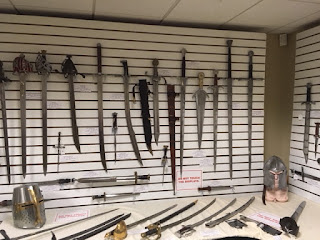[Shangrila] Towers of Terror: A Natural History of Hell
Happy Halloween! For the last of my horror-themed posts this month, I'm taking a look at "A Natural History of Hell," a collection of weird tales from Jeffrey Ford.
Horror has long had a metafictional streak (rest in peace, Wes Craven), and many of the 13 tales in Jeffrey Ford's "A Natural History of Hell" concern supernatural storytelling. Whether it's Emily Dickinson trying to divine a counterspell for living death ("A Terror"), or dolls being instilled with words to harness a child's imagination ("Word Doll"), words have terrible power in Ford's universe, and he explores the consequences in neat, evocative prose.
The collection isn't strictly fantasy or horror, and it's at its weakest when it veers from those genres. "Rocket Ship to Hell" is straight-up sci-fi, and the worst entry, "Blood Drive," is a gun control fever dream - "The Handmaid's Tale" for hoplophobes. On balance, though, Ford is a good writer and this is a good collection, so it's worth a read.
Until next year, dear reader - have a great Halloween!















